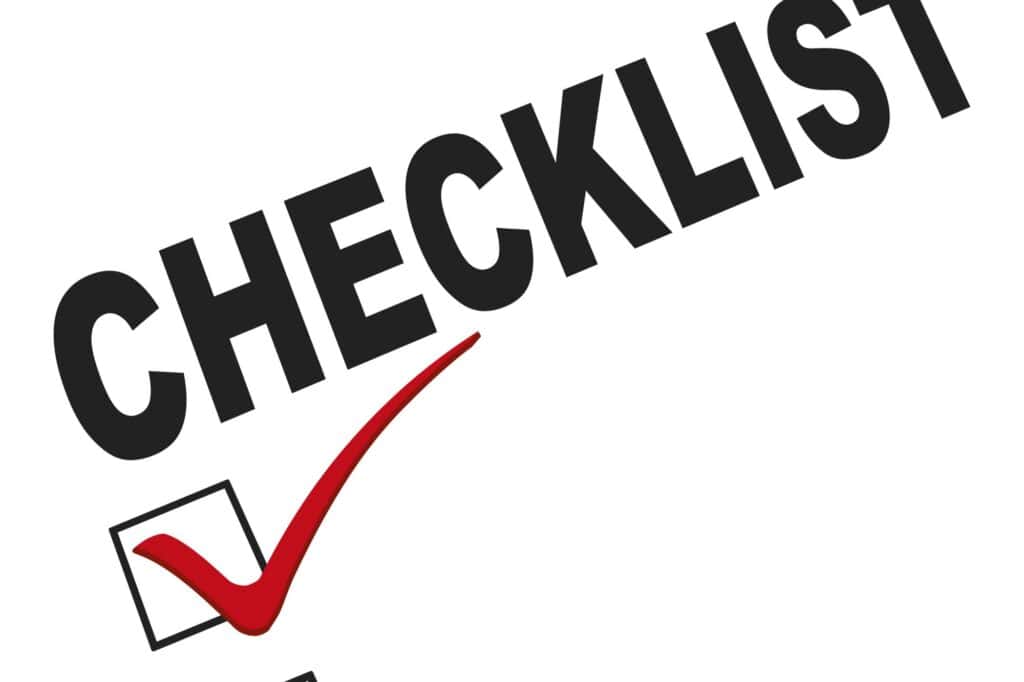Moving soon and seeking clarity on where to begin? Learn how to create a moving checklist that pares down the process into clear, actionable steps. You’ll find out exactly what to do when, from arranging packing materials to finalising your utility switch-over, all designed to make your move as smooth as possible.
Key Takeaways
- Planning ahead with a detailed moving checklist is crucial to avoid chaos, including choosing a move date, starting to pack early, and organising a final walk-through of your old place.
- Gather packing supplies in advance, pack non-essential items first, and label boxes strategically by room for a more organised and efficient move.
- Secure a reliable moving company by comparing quotes and checking licences, book your moving truck well ahead of time, especially during peak seasons, and make all necessary address updates.
Crafting Your Moving Timeline: Key Dates and Actions
The first step towards a stress-free relocation is to create a detailed moving timeline. Planning every detail weeks in advance significantly reduces the chaos associated with moving in Fulham. Start by preparing a moving checklist to prioritise tasks and deadlines. This list will be your roadmap, guiding you from two months before the move until the movers arrive.
Focus on big-picture tasks early on. Setting your moving date, starting packing well in advance, and scheduling a final walk-through is crucial for a smooth transition. Let’s break these down further.
Determine Your Move Date
A pivotal step in your moving process is deciding on your exact move date. This date will dictate when you need to start packing, book your moving company, and notify utility companies. If you’re renting, your lease start date marks the beginning of your legal responsibility for the new place, but your actual move-in date could be different. Negotiate with your landlord for any prorated rent if you plan to move in early, and make sure to have this agreement in writing.
Once you have your move date set, you can start making travel arrangements and planning the logistics for moving day. This includes booking the moving truck and coordinating with friends and family who might be helping you out. Having a clear move date will anchor all your subsequent planning and ensure everything aligns perfectly.
Begin Packing Early
Packing early can significantly reduce last-minute stress. Begin by decluttering your home – this not only saves time but also reduces the number of items to transport, thereby saving money and effort. About two weeks before your move, start packing non-essential items like books, holiday decorations, and rarely-used kitchen gadgets.
By tackling non-essential items first, you diminish the pressure of last-minute packing and avoid rushed decisions that could lead to extra costs. This strategy will make your final packing days much more manageable and less chaotic.
Schedule Final Walk Through
Preparing for the final walk-through of your original residence is a crucial step that ensures you leave the place in good condition, meeting the expectations of your landlord or the new owner. Measure room dimensions and furniture beforehand to avoid any complications related to furniture placement on a moving day.
Scheduling a final walk-through allows you to:
- Identify any last-minute items that need attention
- Ensure a smooth transition
- Catch any overlooked details
- Reinforce your readiness for the move
This meticulous step helps you ensure a smooth transition and catch any overlooked details.
Organising Your Moving Tasks: From Boxes to Bubble Wrap
Efficient organisation of your moving tasks can make a significant difference. Start by gathering packing supplies early, ensuring you have everything from bubble wrap to cardboard boxes. This proactive approach prevents last-minute scrambles for materials and helps you start packing non-essential items a month before the move.
Another crucial step is the strategic labelling of boxes. Proper labelling helps you know exactly what’s inside each box and where it should go in the new house, making unpacking a breeze. Let’s delve into these tasks in more detail.
Gather Packing Supplies
Order essential packing supplies about six weeks before moving day. This includes:
- a variety of box sizes
- bubble wrap
- packing paper
- stretch wrap
Speciality containers like dish barrels and wardrobe boxes are also incredibly useful for a few items, especially specific ones.
Protecting fragile items with bubble wrap and securing furniture with stretch wrap and moving blankets prevents damage during transit. Using sealable plastic bags for small, easily lost items and labelling boxes with waterproof markers ensure everything stays organised and legible, regardless of the weather conditions on a moving day.
Label Boxes Strategically
Labelling your boxes by destination room is a strategic move that facilitates quick and easy unpacking. Apply labels to the top and at least two sides of each box so they can be easily identified from any angle. Prioritise the destination of items by their new room, ensuring clothes and bedding end up in the bedroom, and kitchen items in the kitchen. This increases the chances of the right box being placed in the right room, minimising confusion.
By knowing exactly where each packing boxes should go, you can avoid rooting around for items and streamline the unpacking process, making your first days in the new home much more comfortable.
Securing Professional Help: Choosing the Right Moving Company

A reliable moving company can significantly ease the moving process. Start by comparing quotes from at least three moving companies, verifying their licences and insurance, and assessing their experience and reputation. This ensures you find professional movers in Fulham who can handle your belongings with care.
To avoid last-minute hassles, it’s necessary to book your moving truck in advance. Let’s explore these steps further.
Compare Moving Companies
Obtaining at least three quotes from moving companies that visit your home in person can lead to more precise cost estimates, especially for large items or properties with difficult access. Review each company’s insurance policies provided by their insurance company, licences, and experience with specific move-related challenges.
Verify whether the moving company’s vehicles can navigate potential route challenges, such as steep gradients or tight bends. Choosing a moving company based in the destination location may offer more competitive rates and tailored services.
Reserve Your Moving Truck
Booking your moving truck at least six weeks before moving day is essential for a stress-free move. During peak moving seasons, the demand for moving trucks is higher, making it even more important to book in advance.
Reserving early ensures availability and allows you to plan your move without the added stress of last-minute arrangements. This proactive step helps you stay on track and avoid unnecessary complications.
Addressing Administrative Details: Utilities and Address Updates
Administrative details are a critical part of the moving process that need to be addressed. Notify your utility companies well in advance to ensure a seamless transition of services. Update your new address with friends, companies, and personal accounts to avoid missing important correspondence.
Let’s break down these tasks to ensure nothing slips through the cracks.
Notify Utility Companies
Schedule the setup of essential utilities such as electricity, gas, and internet at your new residence in advance. Arrange for the disconnection of these services at your current home to avoid unnecessary charges. If the existing utility services at your new home do not meet your expectations, explore comparison sites to find better deals.
Upon moving in, contact the utility supplier to inform them about the move and acquire the necessary information for account setup and service continuation.
Update Your New Address
Submitting a change of address form to the post office is essential for starting mail delivery at your new address. Notify post redirection services about your address change at least five days in advance to ensure a seamless transition of mail forwarding.
RECOMMENDATION
Update your driver’s licence and car insurance shortly after moving to ensure legal compliance and coverage. Government agencies, financial institutions, and healthcare providers also need to be informed of your new address.
Preparing for Day One in Your New Home: Essentials Box and More
To ensure a smooth transition, it’s important to prepare for your first day in the new home. Pack an essentials box with items you’ll need immediately, such as toiletries, a change of clothes, and basic tools. Setting up the internet connection in advance ensures you’re connected from day one.
Let’s delve into these preparations.
Pack an Essentials Box
An essentials box should be packed early and include important documents, valuables, and items needed immediately upon arrival. For children, pack a separate box with essentials like a change of clothes, pyjamas, and favourite toys or books to ensure they have comforts and entertainment available right away.
Keep all bedding together in one easily identifiable box to prepare beds quickly and comfortably during the first night in the new home.
Set Up Internet Connection
Contact your broadband provider at least two weeks in advance to set up your internet connection. Check the service options and speeds available at your new address using online broadband checkers. If you’re in the middle of a contract, transferring the service to your new address might be a smarter choice to avoid early termination fees.
Some providers may allow installation before your move-in date, ensuring immediate availability of internet service.
Family Matters: Involving Relatives and Pets in the Moving Process
The transition can be smoother when family members and pets are involved in the moving process. Prepare children for the move by involving them in discussions and familiarising them with the new home. Coordinating pet relocation involves updating vaccinations and booking pet-friendly accommodations.
Let’s explore these aspects further.
Prepare Children for the Move
Involving children in discussions about moving and allowing them to participate in house-hunting activities can help them feel more comfortable with the transition. Familiarise them with the new home by visiting in advance and using books and television shows to illustrate the moving process.
Explain what will happen on a moving day, including the role of movers, to demystify the experience for children. Creating a memory album with photos of the old home can help them retain memories and process the move.
Encourage open communication about their feelings and support them throughout the transition.
Coordinate Pet Relocation
Before moving, ensure your pet’s vaccinations are up to date to comply with local or international laws and reduce health risks. Update your pet’s identification tags or microchip information with your new address and contact details.
Familiarise your pet with the travel carrier or vehicle in advance of the move to reduce anxiety …
If your move involves long distances, book pet-friendly accommodations in advance. Familiarise your pet with the travel carrier or vehicle in advance of the move to reduce anxiety during the journey.
The Final Countdown: Last-Minute Checks and Mover Coordination
In the final week before the move, carry out last-minute checks and preparations to complete all tasks. Confirm arrangements with your movers and carry out any remaining home prep three days before moving day.
For peace of mind against loss or damage to belongings, it’s recommended to purchase moving insurance. Let’s break down these final steps to ensure a smooth transition.
Confirm Arrangements with Movers
Confirm with the moving company the time and logistics of the move, including the pre-move survey and arrangements for the moving elevator and truck parking. Keep track of moving estimates, receipts, and an inventory of items, storing move-related documents digitally for easy access.
Investigate the moving company’s history and reputation through the Better Business Bureau and online reviews to assure reliability and prevent issues.
Complete Minor Home Repairs
Address minor home repairs to leave the property in good condition. A toolkit with essential items like hammers, screwdrivers, and a utility knife is needed for home repair tasks such as disassembling furniture.
Handling these repairs can ensure the return of your security deposit or maintain the value of the home for the new owner.
Post-Move Priorities: Unpacking and Home Set-Up

After the move is complete, the priority should be unpacking and setting up your new home. Start by unpacking essential items such as bed and toiletries, and focus on setting up essential rooms like the bathroom and bedroom. Utilising a moving house checklist can help ensure a smooth transition.
As all the boxes are emptied, break them down immediately to reduce clutter and potential tripping hazards. Consider donating boxes if they are still in good condition.
Start Unpacking
Begin unpacking by setting up the kitchen first, which is a central part of daily life and essential for meal preparation. Ensure all kitchen utilities are working properly before proceeding with unpacking other kitchen items.
Start with unpacking large items to quickly clear them out of the way and create more space for organising smaller items afterwards.
Make Necessary Updates
Once you’ve moved into the new house, conduct a deep clean of the property before starting to unpack. Confirm that you have all the keys for each door, window, and cupboard in the new house.
Updating address information with healthcare providers, banks, and other financial institutions is necessary to ensure continuity of care and proper handling of official records.
Summary
Creating a moving timeline, gathering supplies, securing professional help, and addressing administrative details are crucial steps for a stress-free move. Involving family members and pets, confirming arrangements, and prioritising unpacking further streamline the process. By following these steps, you can transform your moving experience from daunting to manageable, ensuring a smooth transition to your new home. Remember, preparation and organisation are your best allies in achieving a stress-free relocation.
Frequently Asked Questions
When should I start creating my moving checklist?
You should start creating your moving checklist at least two months before your move to make sure you have enough time to cover all tasks and deadlines.
How can I ensure my moving company is reliable?
To ensure your moving company is reliable, compare quotes, verify licences and insurance, and check the company’s reputation through reviews and the Better Business Bureau. This will give you confidence in your choice.
What should be included in an essentials box?
Include toiletries, a change of clothes, basic tools, and important documents in your essentials box for immediate access upon arrival. This will help you settle in quickly and comfortably.
How do I update my address with various entities?
To update your address with various entities, fill out a change of address form at the post office and inform your friends, companies, and personal accounts of your new address. Stay organised and keep a record of who you’ve notified.
What steps should I take to prepare my children for the move?
To prepare your children for the move, involve them in discussions about the move, familiarise them with the new home, and be supportive of their emotions during this transition.







